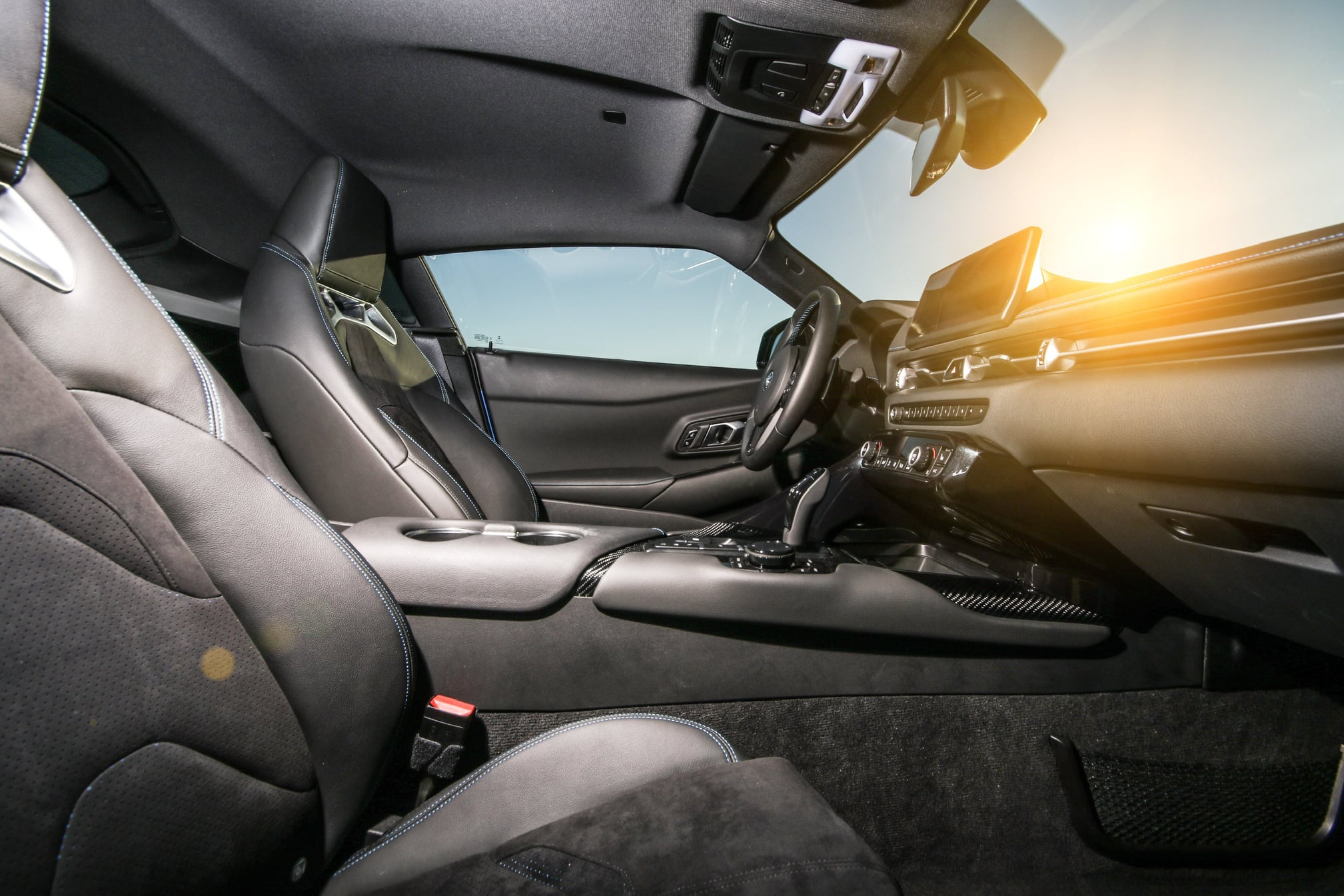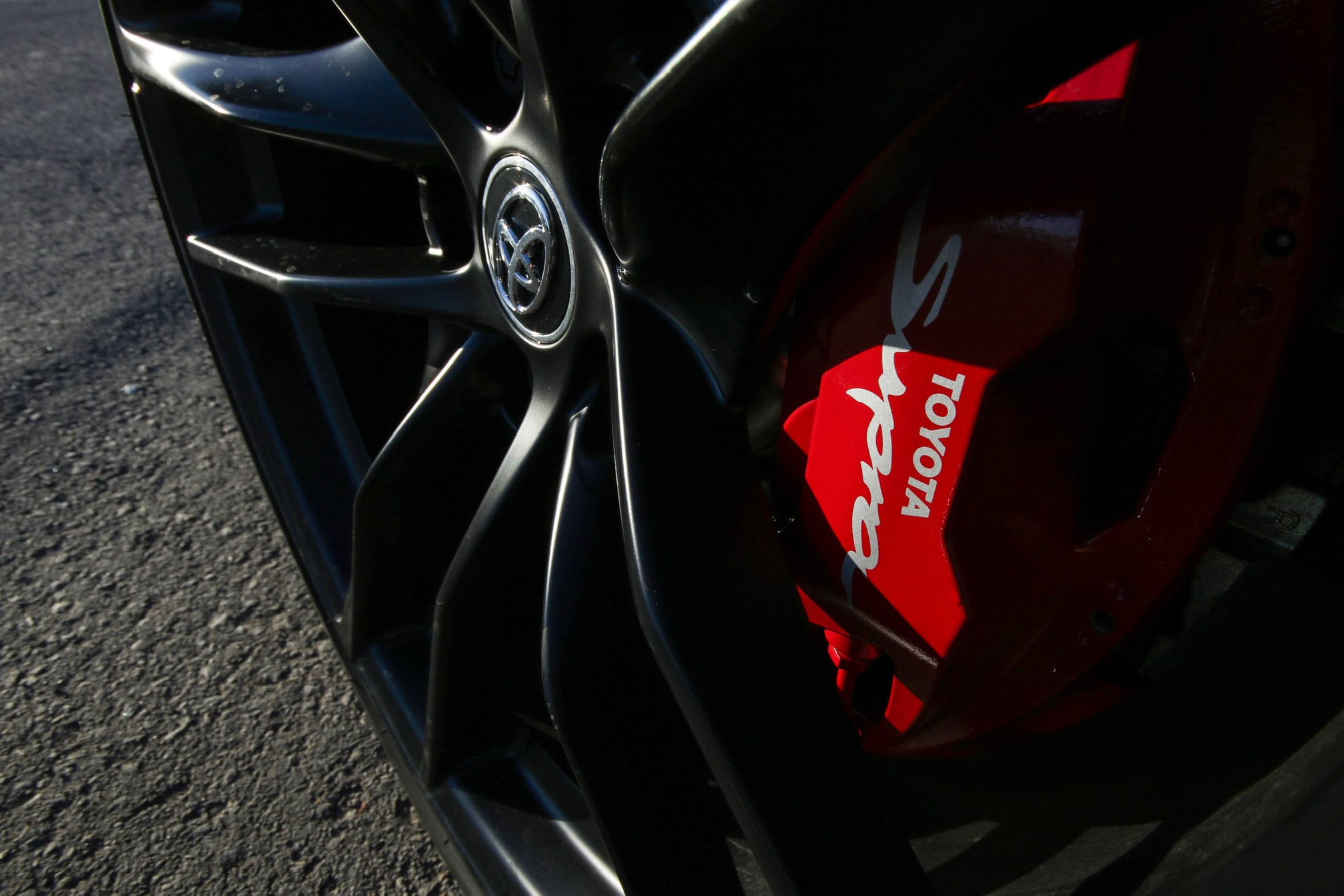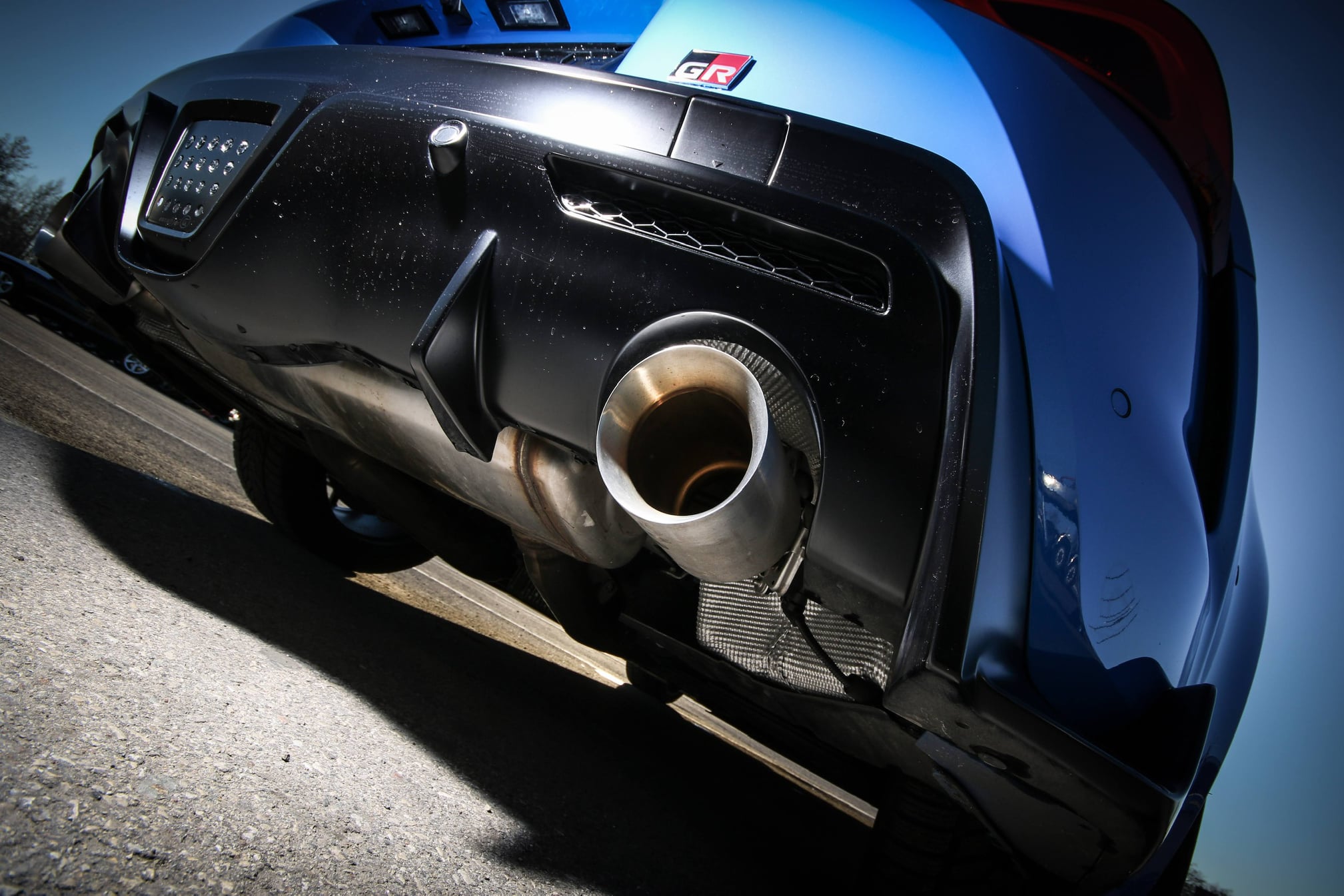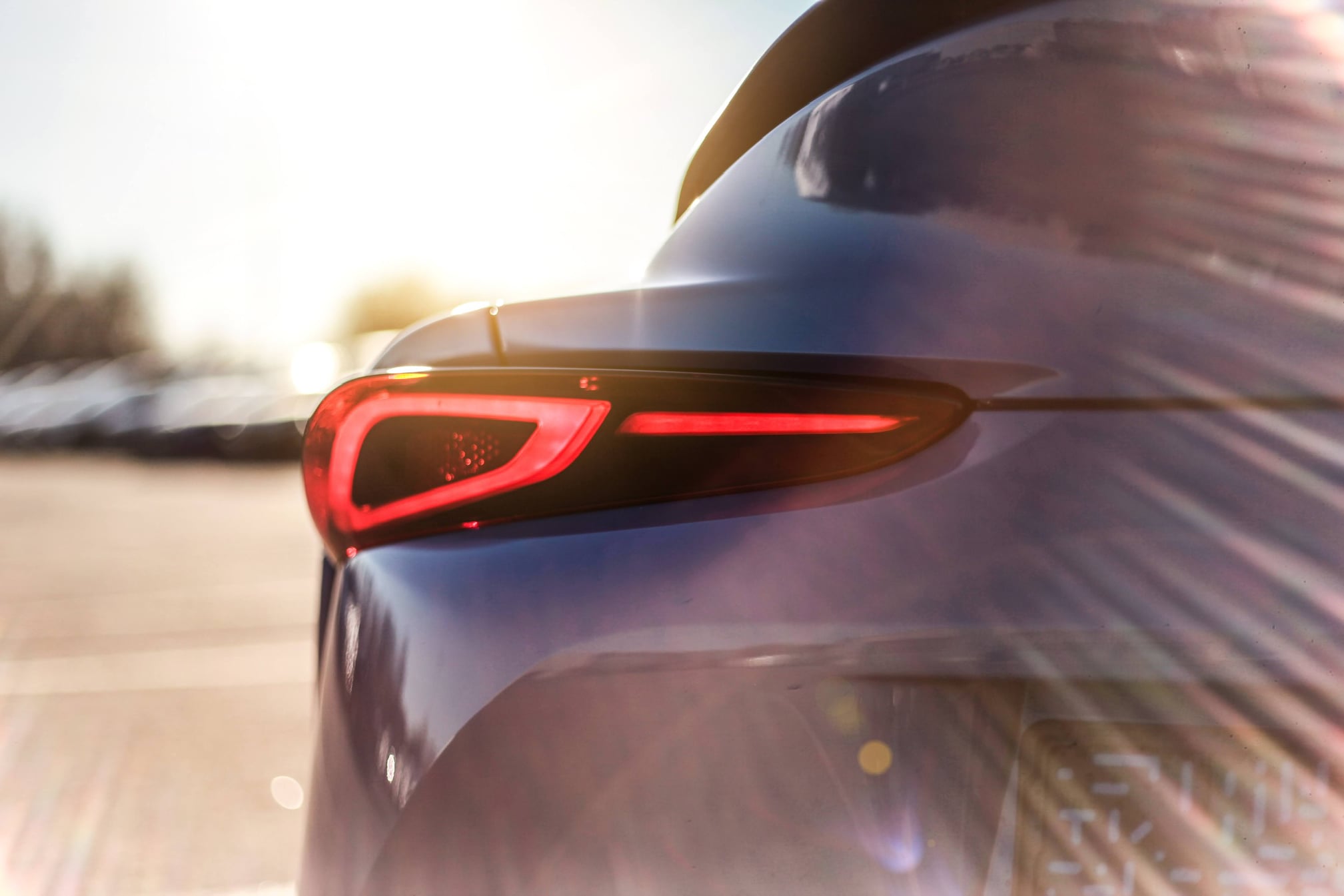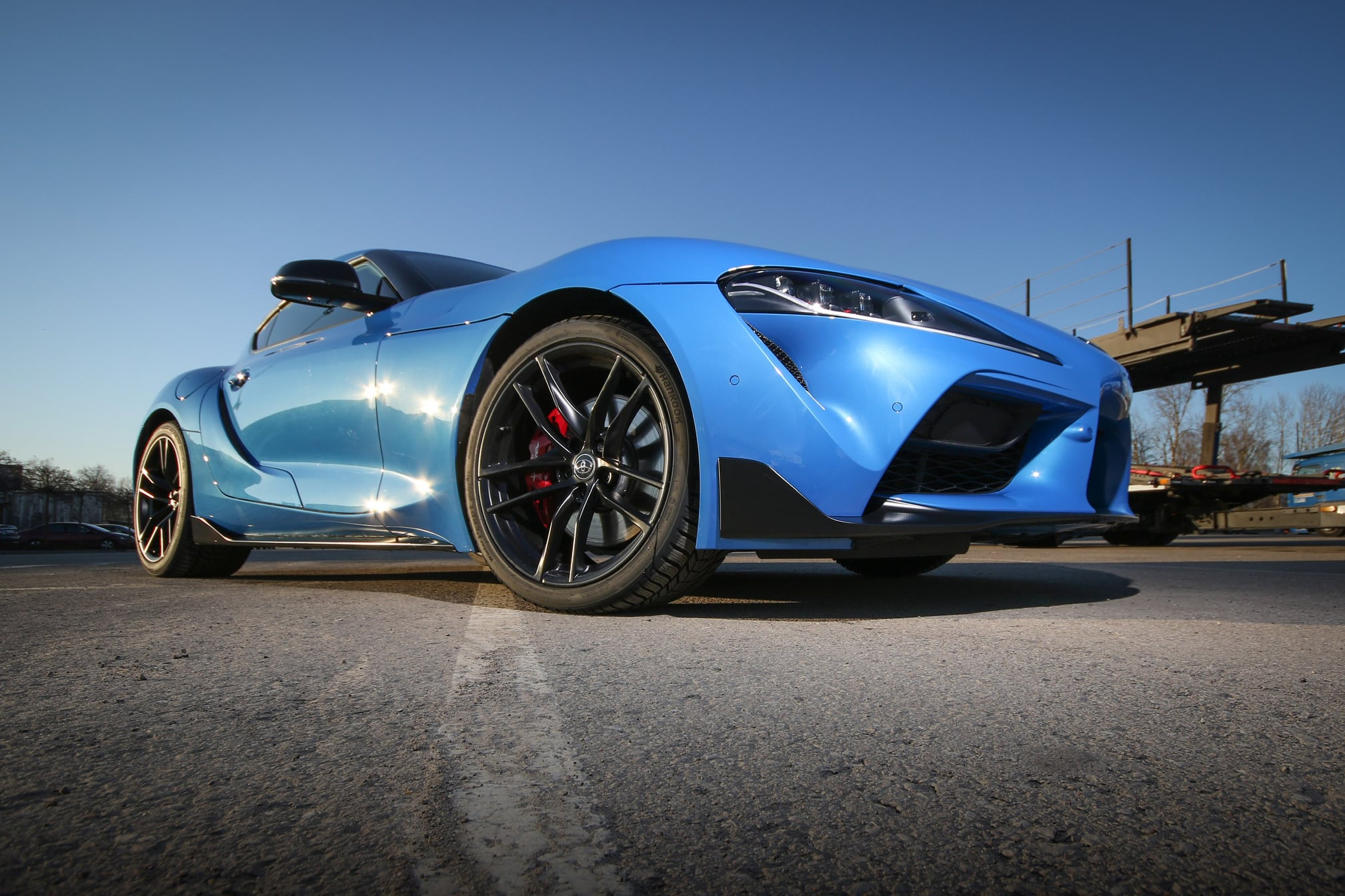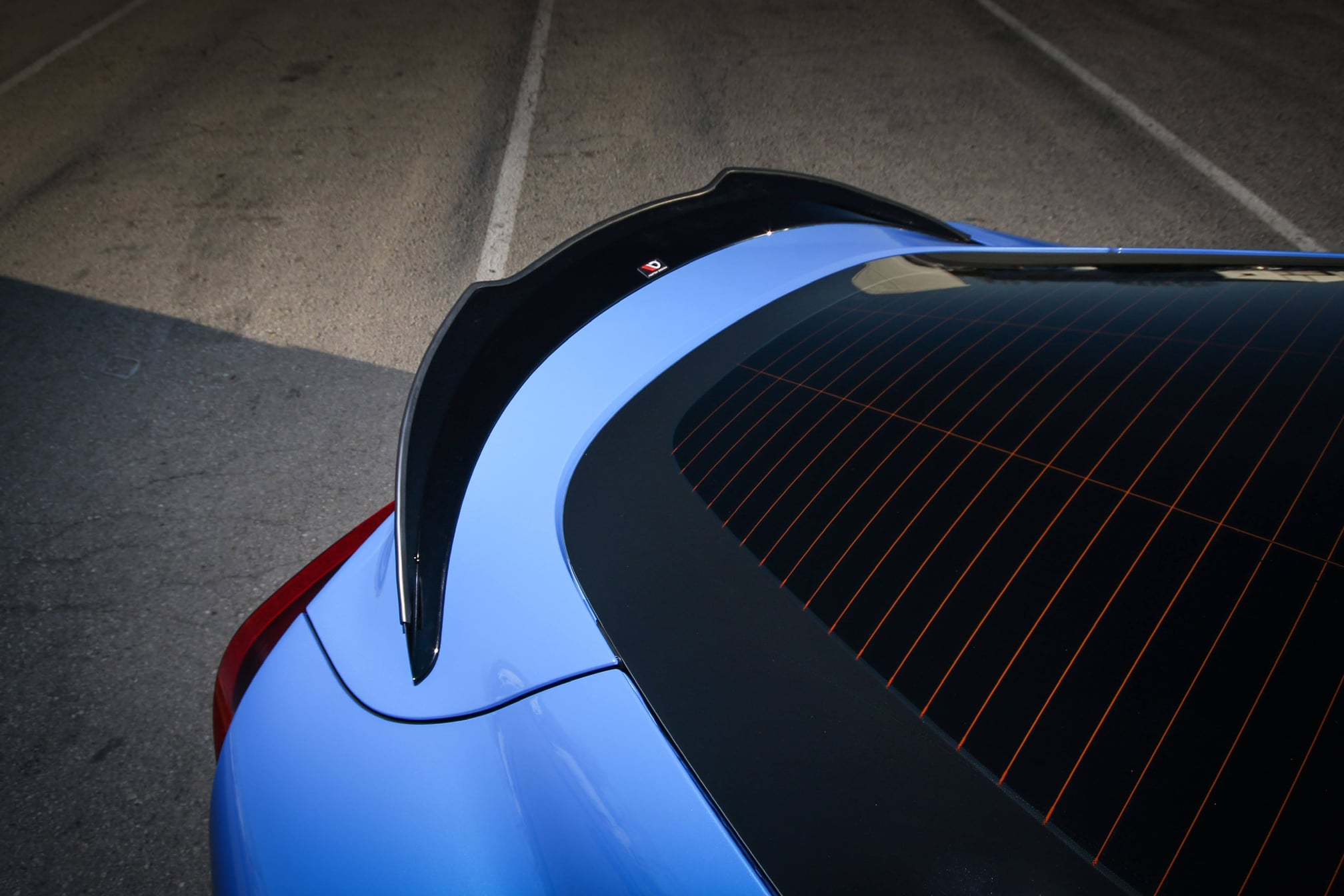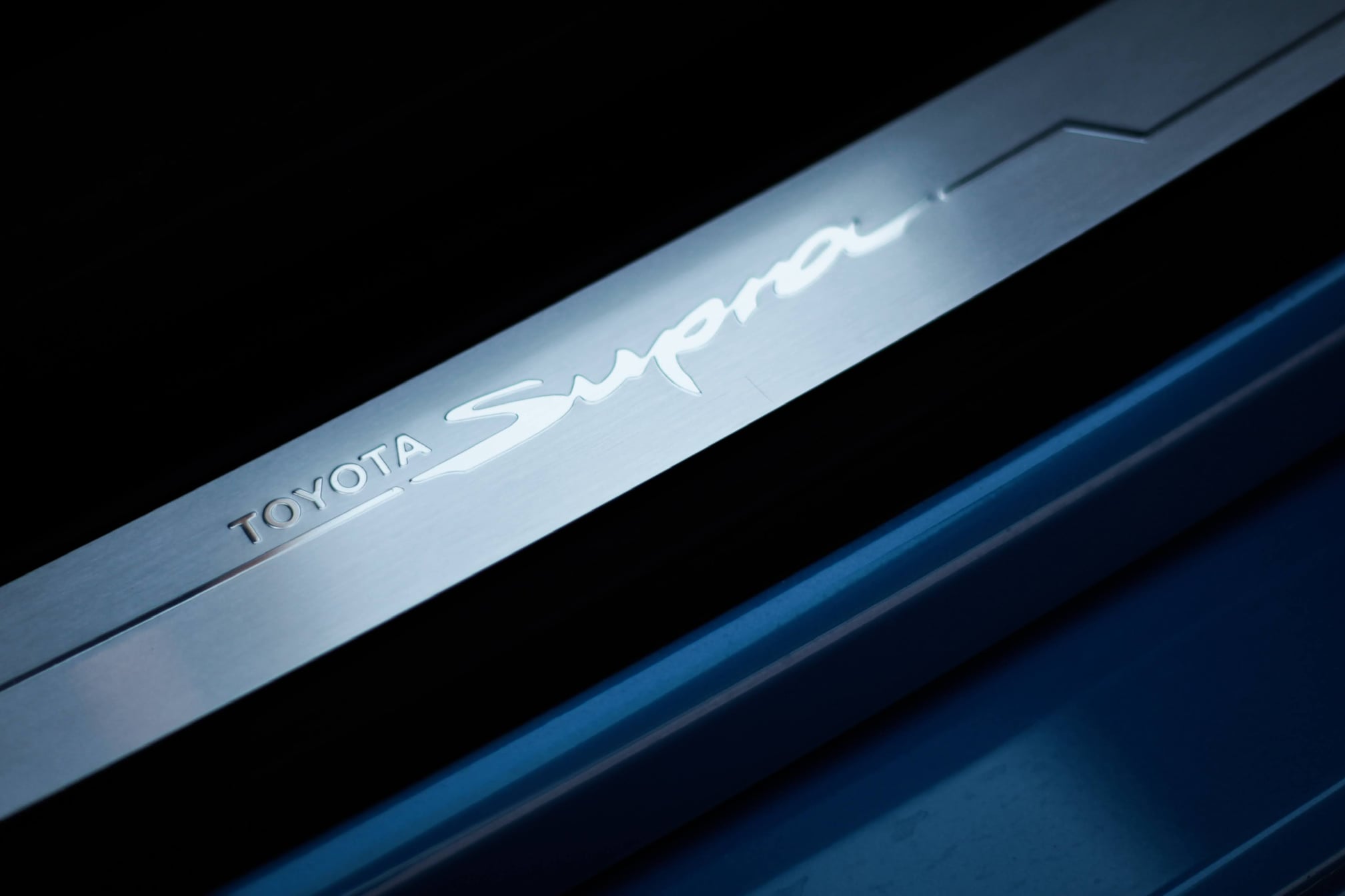A bright blue color flashed for a moment at the car storage of the transportation and logistics company Kurbads. This signifies the arrival of an extraordinary and fast vehicle on the horizon. The release of the Toyota GR Supra Jarama Racetrack Edition, limited to a production run of 90 units, is a good reason to look back at the more than 40-year history of the Japanese coupe: from the very first generation, which still shared body parts with the Toyota Celica, to the 90s 'Porsche beater' with its epic twin-turbo inline-six.
Toyota Supra – the quest for the ideal Japanese coupe.

BEGINNING. A SLIGHTLY BETTER CELICA
The Toyota Supra was developed in the late 70s as a more expensive modification of the earlier released and later equally popular two-door model, the Celica. The model was called the Toyota Celica Supra, where the second word roughly translated to 'surpass' or 'exceed.' Although visually both models were very similar, the Supra indeed surpassed the Celica in size, equipment, and engine capacity. The 2.6-liter six-cylinder engine with 110 HP was Toyota's first engine with electronic fuel injection.
The Supra was significantly more expensive than a comparable Celica, and in Japan, owners of the six-cylinder model had to pay a larger sum in taxes annually. Although the coupe had a fully independent suspension and disc brakes on all wheels, one might still wonder why make the effort if the result was not particularly fast? The answer is the Datsun Z-Car, which Toyota was eager to surpass, especially in the affluent U.S. market. However, the beginning of Supra's career was also shaky after transitioning to a larger 2.8-liter engine. One of the most interesting derivatives of the first-generation model was the Celica XX. That’s what the new coupe was called in the Japanese market, and it is claimed that in 1981 the XX became the first car in the world with an 'electronic navigation computer.' However, overall, the Celica Supra remained an old-fashioned and bulky car with kilograms of chrome where needed and not, a narrow wheelbase, and small disks.
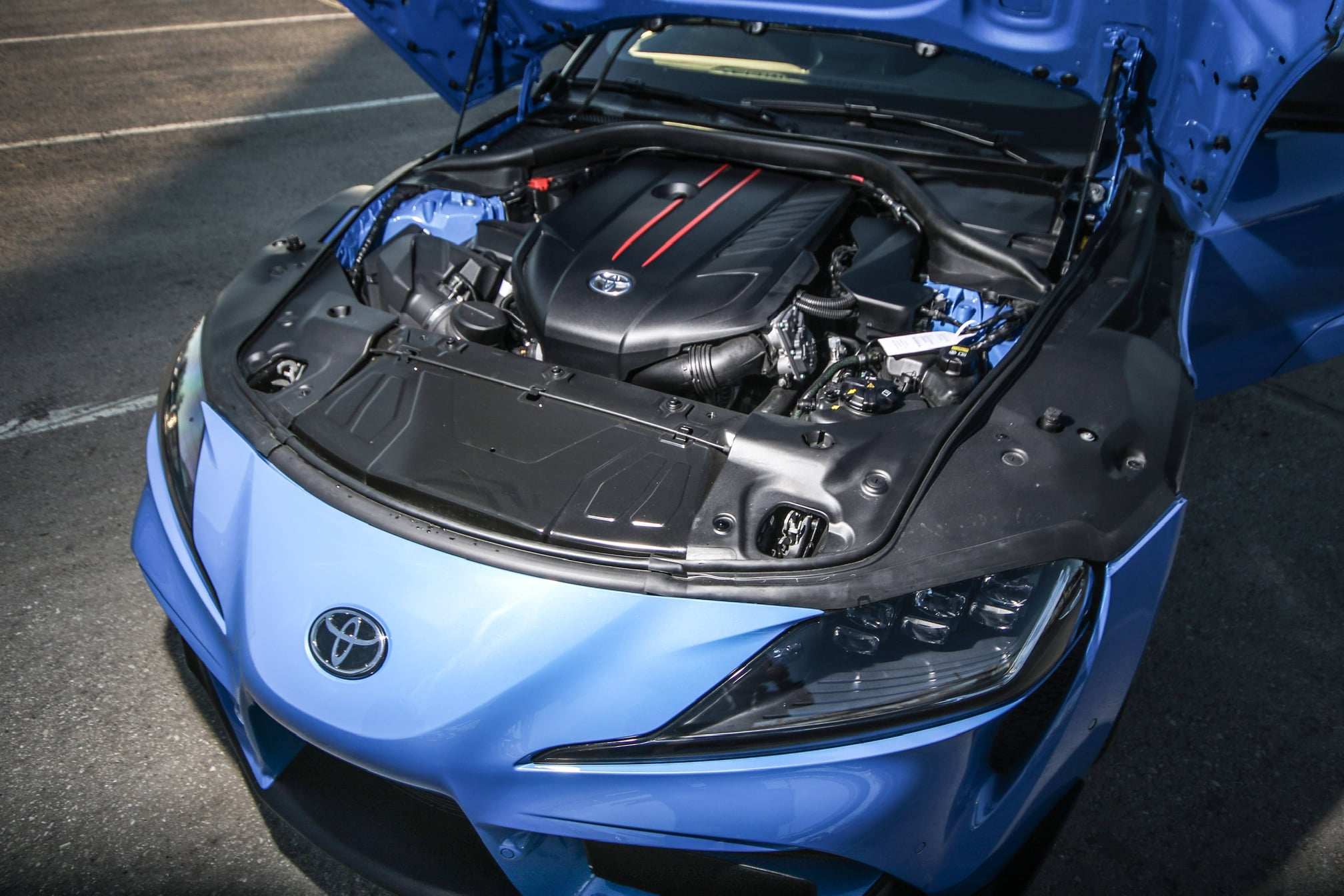
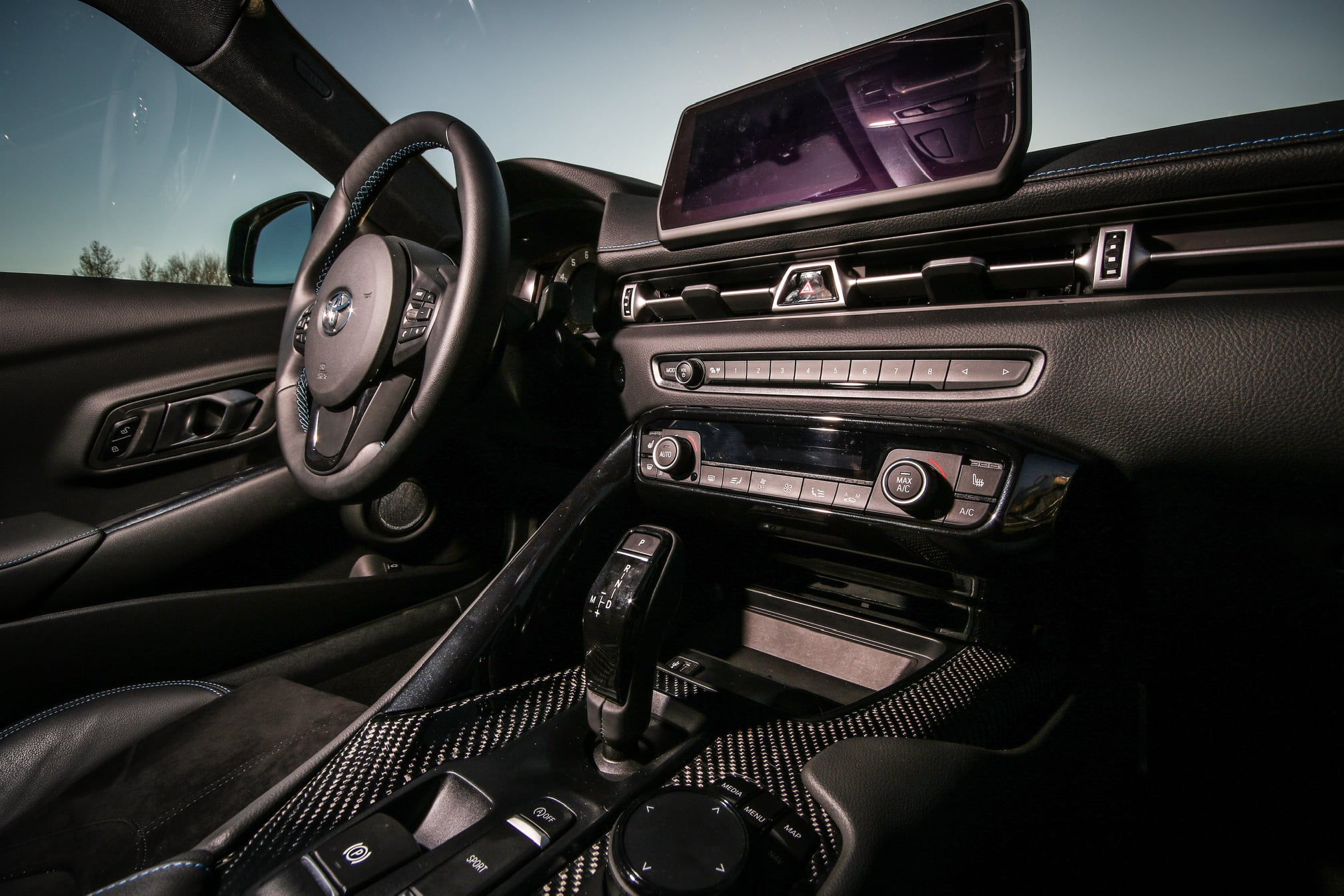
THE FAVORABLE TYPE OR SUPRA P.
The eyes of buyers of affordable Japanese sports cars began to linger on the Supra during its second generation or A60. Although the model was still called the Celica Supra, the most expensive variant was visually distinguished by pop-up headlights, which drove 80s teenagers wild. Although the engines and transmissions did not significantly change, the Supra gradually began to look like something superior, and Toyota actively continued the collaboration with Lotus that had started in the first generation. The complicated deal with the British allowed for valuable suspension enhancements to be introduced in the Supra. The investment finally began to bear fruit. In North America alone, more than 115,000 Celica Supras were sold, and the car even earned a couple of awards. Depending on the continent and country, Toyota offered one of the Celica Supra versions—L-type or Luxury type and P-type or Performance type, or both. As one might imagine, the sub-models primarily differed in decorative details and comfort equipment. As modernization progressed, the peculiarities of the equipment gradually became more complex to the point of being unimaginable today. For instance, one type standardly had an electronic gauge cluster with an onboard computer, while the other had headlight washers, something the former never had, etc. Let’s conclude that the P-Type, with wing extensions and other image-enhancing decorations, became the poster hero.
CLOSE TO PERFECTION
The link between the Supra and Celica was cut only in the second half of the 1980s when the third generation model, A70, was launched. The Toyota Celica shifted to front-wheel drive, from which it never deviated, while the Supra maintained classic rear-wheel drive. Engine displacements and power increased—up to 3 liters and 270 horsepower. Acceleration to 100 km/h now comfortably settled within six seconds, the braking system gained ABS, and the wide body accommodated an A-arm suspension not just at the front but also at the rear. Turbo models could be upgraded with limited slip differentials and adjustable dampers. The purposeful, smoothly rounding body gradually became an icon of Japanese sports cars, enticing even Camaro and Corvette clients. The Supra Turbo A, built for race homologation purposes, became a rare cult model, as only 500 cars were officially available in the Japanese market. Toyota was on the way to the ideal coupe. However, the peak was still only ahead.
UNBEARABLY EXPENSIVE PEAK
In the early 1990s, while the Supra A70 was still selling quite well, several working groups began developing the next generation prototype. The concept from the Aichi Technical Center was recognized as the best in an internal competition, being unexpectedly bold even for the possibilities of that decade. The traditional wedge shape was replaced by an aggressive streamline with an integrated spoiler, functional side air vents, and a particularly wide crossbar. To make the car lighter, its construction extensively used aluminum and even magnesium. Since the new Supra was built on the shortened platform of the luxury coupe Lexus SC, it was 34 cm shorter than its predecessor and weighed 90 kg less. However, the engine caused a real stir. In its maximum configuration, the twin-turbo engine developed 326 horsepower, allowing it to easily surpass not only direct competitors like the Nissan 300ZX Turbo and even the supercar Honda NSX but also aimed at the sports car Olympus, which was then dominated by Porsche. While an acceleration of 4.6 seconds to 100 km/h was still not enough to outdo Stuttgart, Toyota 'bit' into Porsche by showing a shorter braking distance from full speed. The braking power of the Supra was truly unique (the brake discs were larger than those of the Corvette ZR-1), and in combination with nearly granite-like structural strength, the A80 was a car with unforgettable handling. Unfortunately, this performance came at a literally high price. Just six years after the A70 generation, the Supra already cost at least twice as much. For buyers who regarded Toyota as a practical and reliable brand at a reasonable price, the high-performance model seemed an irrational investment. The rising yen rate in export markets made the Supra even more expensive, and in many places, the powerful engine no longer fit into the new emission standards. As a result, even in the largest Toyota Supra market, the US, it sold ten times less than the previous model. By the late 90s, the sports coupe market began to wane, and Toyota decided to cease production of the Supra entirely, which, as it later turned out, was for many years. The once underappreciated Supra A80 is now a valuable collector's item and one of the most prestigious Japanese sports cars ever made.
PREZIDENTA PAVĒLE UN BMW
The Supra was destined to slumber in a Sleeping Beauty-like sleep for at least ten years. In 2012, Tecuya Tada, the chief engineer of the 'people's coupe' Toyota GT86, accidentally revealed in a conversation with the press that Akio Toyoda, the president of Toyota and a car enthusiast, had ordered the rapid production of a Supra successor. The concept car FT-1, showcased at the 2014 Detroit Motor Show, gave the first impression of the upcoming model’s outlines, but the project's final realization turned out to be entirely unexpected. Toyota created the new Supra in collaboration with BMW, basing it on the Z4 roadster. The fact that the Z4 is more of a grand tourer, a fast touring car rather than a thoroughbred sports car, did not confuse the Japanese in the slightest. The GR, or Gazoo Racing division engineers, were tasked with giving the Supra its character, and in the early 2020s, the world saw a completely new Supra. The maximum performance from the BMW 3-liter twin-turbo engine is 387 HP, which allows the GR Supra to demonstrate respectable acceleration under four seconds, but a fan base has also formed for the model variant with a lighter four-cylinder engine. Based on this, the Supra Fuji Speedway Edition series was created in 2020, with 200 cars released in Europe. The Kurbads-transported vehicle is even rarer. The coupe, named after the iconic Spanish racetrack, is available in just 90 units, and only in the exclusive Horizon Blue color. The inline-six engine develops 340 HP of power, which reaches the 19-inch black matte rear wheels. Thus, it can be confidently stated that the Toyota Supra story is far from over, and what’s wrong if the new encyclopedia volume starts together with the Bavarians? Perhaps one day it will include a Targa body and even a manual gearbox...



